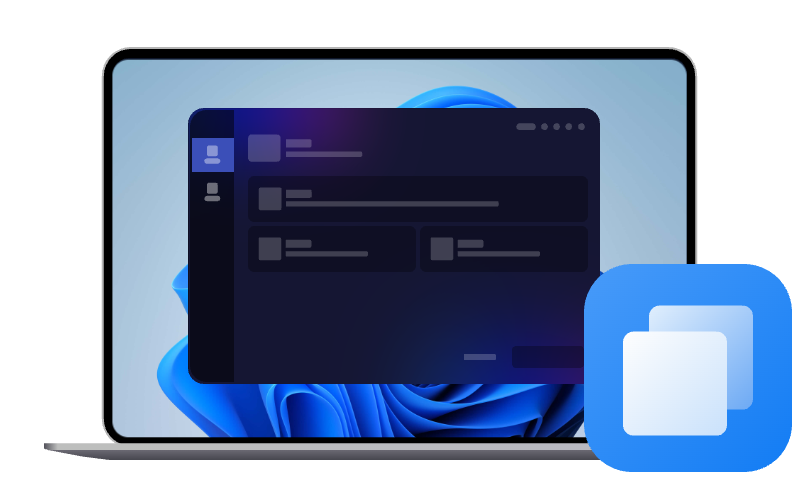Is 250GB SSD Enough for Windows 11? [Full Storage Breakdown]
This article explores whether a 250GB SSD can handle Windows 11 efficiently. Learn how much space Windows 11 really needs and the best way to install Windows 11 on SSD.
Is 250GB SSD Enough for Windows 11?
The short answer: yes, a 250GB SSD is enough for Windows 11, but it depends on how you use your computer. Windows 11 itself only needs around 30–40GB after installation, leaving roughly 200GB of usable space. However, that remaining space can fill up quickly once you install applications, download updates, and store personal files.
If you’re starting with a 250GB SSD, consider pairing it with an external HDD or secondary SSD to store games, media, or backups. You can also use cloud storage or move large folders (like Downloads or Documents) to another drive to save room.
If you want the easiest way to install Windows 11 on SSD, try this reliable disk clone software.
How Much Space Does Windows 11 Really Need to Run Smoothly?
How much space does Windows 11 take on SSD? While Microsoft officially lists 64GB as the minimum storage requirement for Windows 11, that number only tells part of the story. In reality, Windows 11 needs significantly more space to operate smoothly, handle updates, and store essential system files.
1. Size of Windows 11 After Installation
Windows 11 OS size after installation is around 30–40GB. However, this doesn’t include optional components like drivers, system restore points, and language packs that Windows often installs automatically.
2. System Updates and Cache Files
Windows 11 receives regular feature and security updates, which can consume 20–30GB or more over time. Additionally, the system creates temporary files, recovery data, and a Windows.old folder after major upgrades — all of which add up fast if not managed properly.
3. Essential Apps and Programs
Basic software like Microsoft Office, browsers, and media players can easily use another 10–20GB. If you install heavier apps like Adobe Creative Cloud, AutoCAD, or large games, the required space will grow dramatically.
4. Recommended Storage for Smooth Performance
To keep Windows 11 fast and responsive, it’s wise to reserve at least:
- 80–100GB for Windows and system updates
- 50–100GB for apps and productivity tools
- 50GB or more for personal files and flexibility
💡 Pro tip: To keep performance optimal, maintain 15–20% free space on your SSD. Windows relies on this free space for background processes, updates, and temporary file management.
250GB vs. 500GB vs. 1TB SSD – Which Should You Choose?
Common SSD capacity includes 250GB, 500GB, and 1TB. If you don’t know how to choose among them, the following table may give you a clue.
|
Specification |
250GB SSD |
500GB SSD |
1TB SSD |
|
Usable Space After Windows 11 Install |
Around 180–200GB |
Around 430–450GB |
Around 900GB |
|
Best For |
Light users (web, documents, office work) |
General users, students, light gamers |
Gamers, creators, professionals |
|
Advantages |
Affordable, fast boot speed, perfect for minimal setups |
Balanced capacity and cost, smooth multitasking, room for large apps |
Ample space, ideal for heavy workloads, future-proof |
|
Disadvantages |
Limited storage, frequent cleanup needed |
May still fill up over time with large files |
Higher cost, unnecessary for light users |
✅ Recommendation:
A 500GB SSD is the sweet spot for most Windows 11 users, offering solid performance and enough room for apps and updates. If you’re a gamer or content creator, a 1TB SSD provides long-term flexibility and faster workflow efficiency.
Bonus: Easiest Way to Install Windows 11 on SSD
If you’re upgrading to a new SSD or replacing an old drive, installing Windows 11 doesn’t have to be complicated. While you can perform a fresh install from a USB drive, the easiest and fastest method is using a system clone. The best system clone software – AOMEI Cloner comes to help.

- System Clone: Clone your entire Windows operating system, including programs, settings, and files, to another SSD or HDD. No need to reinstall Windows or apps after migration.
- Disk Clone: Copy the entire hard drive to a new drive, including all partitions, system files, and data. Perfect for upgrading to a larger SSD or replacing an old drive.
- Partition Clone: Clone a single partition instead of the entire disk. Useful for transferring specific data partitions without affecting other parts of the drive.
- SSD Optimization: Automatically align partitions for SSDs during cloning. Improve read/write speeds and extend the lifespan of the SSD.
- Bootable Media Builder: Create a WinPE bootable USB or CD to clone drives even when Windows cannot boot. Ensures cloning is possible in emergency situations.
Download AOMEI Cloner and follow the steps below to clone Windows 11 to an SSD:
Step 1. Connect the new SSD to your PC. If you are installing Windows 11 on an M.2 SSD, please connect it via an M.2 slot or adapter.
Step 2. Install and launch AOMEI Cloner. Click Clone and select System Clone to copy only OS.
Step 3. Boot-related partitions are selected by default. Select the new SSD as the destination drive and click Next.
Step 4. Enable SSD Alignment to optimize SSD performance. Then click Start Clone to begin copying Windows 11 to SSD.
✍ Note: If you are cloning to a larger drive, there will be an option called Make full use of disk space and it is checked by default to maximize disk space usage.
Step 5. Once the cloning finishes, restart your PC and enter BIOS/UEFI to set the new SSD as the primary boot device.
✍ Note: Keep your old drive disconnected during the first boot to avoid conflicts. Once Windows 11 boots smoothly from the new SSD, you can format the old drive for extra storage if needed.
Conclusion
Is 250GB SSD enough for Windows 11? The answer is yes but it is the practical minimum for smooth everyday use. For multitaskers, gamers, and professionals who want breathing room, a 500GB SSD or larger is ideal.
To install Windows 11 on a new SSD easily and safely, you may turn to the best cloning software AOMEI Cloner. It offers all-around cloning features to help you clone hard drives of different sizes, brands, and interfaces. Don’t hesitate to try it out!

